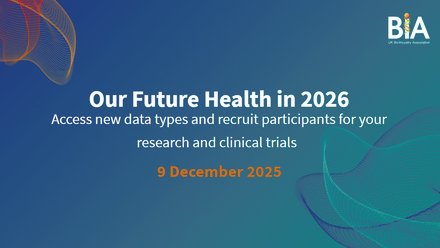Dementia diagnosis: the road to early intervention

In this blog, Dr Sonya Miller, Head of Medical Affairs at TauRx, and Professor Bjoern Schelter, CEO at GT Diagnostics and Chief Analytics Officer at TauRx, discuss what’s needed to create a more effective dementia diagnosis process and get treatment to those who need it in the timeliest manner possible.
Alois Alzheimer first identified Alzheimer’s disease (AD) in 1906, two years before Henry Ford launched the Model-T, the world’s first mass-produced car. While automobile diagnostics have since become digitised, streamlined, accurate and instantaneous, dementia diagnosis still often takes more than six months with up to 75% of those with symptoms not diagnosed at all. That’s a long wait if you have a progressive disease. It’s also a serious under-diagnosis of dementia, a distressing and widespread condition which was the leading cause of death in England in 2022.
Can we achieve the diagnostic efficiency we expect for our cars for people?
The short, and positive, answer is yes – but only with investment and collective effort for healthcare systems to be ready for breakthrough treatments and new, efficient diagnostics. Aberdeen-based TauRx, global leaders in tau-targeting research and its joint-venture company GT Diagnostics (GTD), are contributing to this endeavour by pioneering a new generation of treatment and diagnostic tools and applications, based on neuroscience and artificial intelligence.
This digital approach to diagnostics will simplify and accelerate diagnosis. Preparations are underway to launch a suite of readily deployable e-tools that range from interactive well-being apps to expert platforms. The demand, from patients and clinicians alike, is enormous. It’s clear the established diagnostic model for dementia is overburdened, hard to access and restricted by long waiting times.
A Royal College of Psychiatrists audit, published in August 2022, found in some parts of the UK, people with dementia face waits of up to two years for a diagnosis because memory clinics are ‘chronically underfunded and overlooked’. Even when they get their appointment, the questionnaires used for testing cognitive abilities are decades out of date in terms of their frame of reference. These delays are compounded by patients then being referred for a brain scan adding considerably to already lengthy waiting times.
Consequently, diagnoses tend to come very late or not at all. But there is a better way. Instead of starting the journey with GPs who have very limited consultation times, it can begin in the comfort of your own home. GTD’s psychometric tools come as apps for smartphones and tablets. They are set to transform diagnosis speed, ease, objectivity, and efficacy.
There are three tiers to the suite of apps, with the diagnostic utility increasing at each level. The first is a well-being app (called HiPAL) which allows those worried about their cognitive health to monitor their status in their own homes in an engaging and interactive way. It removes the stresses of attending an appointment and has parallels with wearable devices already widely used.
Crucially, it provides those concerned about their cognitive health and those who may have early-stage dementia with understandable, reproducible, and recorded data to take to their GP.
If this data gives a reason to think something is wrong, the patient moves to the next step – HiPAL Pro - an advanced memory test designed to be used in the waiting rooms of primary care facilities or expert centres ahead of consultations. It provides clinicians with evaluations of objective and subjective memory and mental processing speed. This means valuable consultation time is devoted to the patient and their concerns rather than administering tests.
Enabling more effective initial screening at an earlier disease stage, allows diagnosis to be reached through a more efficient and stress-free process. Crucially, it does not remove the human touch from medicine. Instead, it maximises focus on providing patient-centred care rather than being held up by processes.
Finally, PsyCoXx completes the diagnostic toolbox – a specialised neuropsychological testing tool. Using an innovative algorithm, it supports clinicians with their assessment of patients with suspected or confirmed dementia, allowing them to tailor questions to individual cognitive abilities.
An estimated 944,000 people are currently living with dementia in the UK, and this is forecast to almost double to 1.6 million by 2050. If healthcare systems don’t adjust, they will be overwhelmed.
As so often in human history, technological innovation can provide the solution to difficult problems. The development of these smart psychometric tools, in combination with other advancing diagnostics, will benefit patients, families and clinicians by creating swifter, more straightforward pathways to diagnosis, enabling earlier treatment and better patient outcomes.
TauRx recently announced encouraging topline results from its phase 3 clinical trials of a potential breakthrough treatment for AD that targets one of the core pathologies that drives the symptoms of cognitive and functional decline associated with the disease. By targeting tau aggregation and the formation of destructive tau tangles in brain cells, its investigative drug has potential to slow the rate of progression of AD, whilst also boosting cognitive function through a symptomatic effect. TauRx plans to submit its data for regulatory review this year.
With science on the cusp of such major life-enhancing advances, the need to diagnose dementia more efficiently and effectively becomes all the greater. After all, our loved ones deserve to be looked after better than our cars. Thankfully, these powerful new breakthroughs could be poised to transform the lives of millions.
About the authors:
Dr Sonya Miller is Head of Medical Affairs at TauRx which has completed a clinical phase three trial researching a potential treatment for Alzheimer’s disease and is part of the joint venture which created GTD.
Professor Bjoern Schelter is CEO of GT Diagnostics (GTD) which aims to change the dementia diagnostic landscape by developing much-needed digital tools to support early diagnosis and progression monitoring.






